About the Atlas
Dear Friends of Endangered Alphabets
In 2009, when I started work on the first series of carvings that became the Endangered Alphabets Project, times were dark for indigenous and minority cultures. The lightning spread of television and the Internet were driving a kind of cultural imperialism into every corner of the world. Everyone had a screen or wanted a screen, and the English language and the Latin alphabet (or one of the half-dozen other major writing systems) were on every screen and every keyboard. Every other culture was left with a bleak choice: learn the mainstream script or type a series of meaningless tofu squares.
Yet 2019 is a remarkable time in the history of writing systems. In spite of creeping globalization, political oppression, and economic inequalities, minority cultures are starting to revive interest in their traditional scripts. Across the world, calligraphy is turning writing into art; letters are turning up as earrings, words as pendants, proverbs as clothing designs. Individuals, groups, organizations and even governments are showing interest in preserving and protecting traditional writing systems or even creating new ones as way to take back their cultural identity.
What? Why?
Okay, I got those questions in the wrong order.
Why are endangered alphabets important? I’ve written about this at some length on the Endangered Alphabets site. That will also help explain that our Atlas is different from an atlas of endangered languages. That atlas already exists, and I highly encourage you to check it out at endangeredlanguages.com.
What is an endangered alphabet? Once again I’m going to deal with those two words in reverse order.
When I say “alphabet,” I really should say “script” or “writing system.” Not all written languages are alphabets. Some are abjads, or abugidas, or syllabaries. A couple are even pictographic systems. I use “alphabet” as a kind of familiar shorthand.
When I say “endangered,” I can’t claim I’m drawing on statistics of current usage. There are no such statistics. Counting the number of people who speak a language is hard enough, especially as census information is usually inexact and out of date. Counting the number of people who write using a script — well, nobody anywhere ever gathers that information. So I use an inexact definition, more (as they say in Pirates of the Caribbean) a set of guidelines:
- The Atlas typically includes scripts that do not have official status in their country, state, or province, and that are not taught in government-funded schools.
- The Atlas does not include variations or extensions of the Latin alphabet, the Arabic alphabet, or the International Phonetic Alphabet. (I realize this excludes, for example, many Native American languages/alphabets, which we are trying to help in ways that lie outside the mission of the Atlas.)
- It doesn’t include extinct alphabets. (It is actually far harder to determine whether an alphabet is extinct than you’d think.)
- It does not include scripts such as Elvish and Klingon created for works of fiction, even though many of these are remarkably inventive and/or graphically fascinating, and a surprising number of people have learned them.
- It doesn’t include alphabets that may not be extinct but never achieved widespread acceptance and use within their cultural and linguistic community.
As to that last point, here’s why.
In a sense the Atlas is not about alphabets, nor even about languages, but about people.
My goal is to include scripts from indigenous and minority cultures who are in danger of losing their sense of history, identity and purpose and who are trying to protect, preserve and/or revive their writing system as a way of reconnecting to their past, their dignity, their sense of a way ahead.
A traditional script is a visual reminder of a people’s identity — as we can tell by the number of cultures that continue to use their script as an emblem (on printed invitations, on shop fronts, even on the national flag) long after most people have stopped using it for everyday purposes.
This is who we are, the script announces, or at least who we were.
Where?
The pins in the Atlas are accurate only in a very general sense. Although some scripts are quite restricted in their range of use, no script is used in only one specific location.
Falling, Rising
Most of the scripts in the Atlas fall into one of two categories: declining and emerging.
The majority are scripts that were once the main writing system of a culture — probably a culture that was established and significant, at least locally, for it to have its own writing system — but now that culture has lost or is losing its status, its homeland, and its sense of identity and purpose. Typically it is being dominated, bullied, ignored, or actively persecuted by another, more powerful culture. Invasion and military or bureaucratic defeat feature depressingly often in these histories. Also typically, this process of cultural erosion or erasure does not make the news.
A side note: we are accustomed to thinking of wars as taking place between countries. The Endangered Alphabets Project has taught me that wars far more often — perhaps constantly — take place within countries.
In the face of this process of cultural overrun, a second category of scripts has emerged, and is emerging. These are scripts that have been created relatively recently — within the past 200 years and often within the past 25 years — specifically to give the author’s own culture an alphabet that suits the range of sounds and expressions of their spoken language, and usually also to give that culture a sense of identity and self-respect. We could call these emerging or “custom” scripts.
In what sense are these endangered alphabets? They’re endangered in the sense that every newborn is endangered. There are examples of new scripts being so successful and so widely and eagerly accepted that they represented a threat to authority, and their creators have been arrested, driven into exile, even murdered. This has happened even in the 21st century.
Even without such active opposition, overcoming the inertia in the system takes almost infinite energy. Take, for example, an African country that was formerly a British colony. Independence may have led to official use of the indigenous language, or languages, but they will almost always be written in a version of the Latin alphabet. Creating an indigenous alphabet is an achievement in itself, but getting it accepted and taught is, if anything, far harder.
So even though some emerging scripts may have reached a sturdy adolescence, I’m including them in the Atlas out of the belief that indigenously-created scripts need all the help they can get.
Your part in all this
Even as the Atlas goes live, some of it is bound to be incomplete or out of date. Unless it is a collective endeavor, things will only get worse. Please contact us about new laws being passed, new organizations working to protect scripts, new teaching videos and learning apps, even new scripts being created. We can’t be useful without being current.
And with that in mind, I can’t help pointing out that keeping the Atlas current will take time and work. My estimate is we will need about $40,000 a year to keep the site informed and up to date.
You can help by making a donation or by sponsoring/dedicating a page of the Atlas. It’s like having your name on a brick, or a seat, in a new theater. If you’re interested, contact me via tim@endangeredalphabets.com.
One final point
For most of human history, most people in the world have got by fine without writing. For indigenous peoples in particular, the period of using spoken language for everyday communication, and an oral tradition (or various forms of what we might call artwork) for preserving what is important, is likely to have continued much closer to the present day.
At times, the fact that something is put into writing and therefore is considered (literally) documented is in itself misleading. There are plentiful examples all over the world where indigenous people have been denied land rights, for example, because they had no written records of ownership, or full citizenship because they have no written proof of residence.
I would not want the Atlas of Endangered Alphabets to give the impression that an oral culture is in some way inferior or more primitive than one that uses writing. Likewise, the fact that such indigenous people don’t appear in this Atlas is not a sign that their plight is any less serious than those with a writing tradition. Moreover, to take language from an oral culture and write it — or carve it, as I have done, to make it more visible — does not make it any more legitimate. It’s an act of translation, but to regard it as an act of legitimization is to make dangerous and disrespectful assumptions.
I would like to thank Carol McGranahan and Carol Irons of the Abenaki community for helping me understand this point.
In general, I’m guided by Article 13 of the UN Declaration on the Rights of Indigenous Peoples, which says: “Indigenous peoples have the right to revitalize, use, develop and transmit to future generations their histories, languages, oral traditions, philosophies, writing systems and literatures, and to designate and retain their own names for communities, places and persons.”
As we enter 2019, the UN Year of Indigenous Languages, it’s worth considering what we can do, or what we can help others do, to sustain those rights.
About the Project
About the Endangered Alphabets Project
To read more about us, please visit the Endangered Alphabets Project website.
Acknowledgements
Acknowledgements
The following people have made all kinds of significant contributions to the development of the Atlas, and have my lasting gratitude:
Simon Ager
Bri Alexander
Ardwan Alsabti
Aimee Ansari
Deborah Anderson
Erik Archambault
Abhinav Amar Aaryan
Peter Austin
Zouhir Az
Siang Bacthi
Jargal Badagarov
Sammi Barch
Abdoulaye Barry
Ibrahima Barry
Aditya Bayu
Nikhil Bhardwaj
Roy Boney
Dörte Borchers
David Bradley
Kristi Longworth Brennan
Savr Budschalow
Nigel Calcutt
Darren Cameron
Isvan Campa
Eric Cooper
Craig Cornelius
David Crystal
Andrew Cunningham
Norman de los Santos
Simon Devylder
Eijun Eidson
Brian Emory
Jay Enage
Michael Everson
Mark DeFillo
Hans de Wolf
Cole DiGangi
Amdy Diop
Pia Flamand
Marco Franceschini
Elisa Freschi
Tapiwanashe S. Garikayi
Randy Gilliland
Surya Gnaneswar
Arpanjyoti Gogoi
Maggie Gordon
Jerry Greenfield
Julia Grunewald
Sachitra Gurung
Chuck Häberl
Chow Nagen Hazarika
Henry Onyekachi Ibekwe
Monica Ittusardjuat
Emily Jacklin
Alexander Joulakh
Alec Julien
Olivier Kaiser
Pule kaJanolintshi
Jerry Kelly
Piers Kelly
Rukshana Kapali
Jeffrey Kesselman
Mrinalinee Khanikar
Shaun Kindred
Bill Kinzie
Maria Konoshenko
Uli Kozok
Daniel Krausse
Devina Kaul Krishna
Prem Kumar
Ferry Kurniawan
Charles Kuzmech
Govardanan Laguduva
Charles J. Lippert
Banwang Losu
Sari Lovyra
Richard Lowe
Ryan Mackey
Madghis Madi
Hannah Majewski
Indra Malasyah
Ashira Malka
Karthik Malli
Biswajit Mandal
Ridwan Maulana
Christopher Ray Miller
Nora Miller
So Miyagawa
Stephen Morey
Fungpre Mro
Sagir Ahmed Msa
Yukti Mukdawijitra
André Müller
Stan Murai
Vaishnavi Murthy
Nolence Mwangwego
Bill Myers
David Myers
Kylie Naig
Robert Wazi Nandefo
David Nathan-Maister
Paul New
Chiadikobi Nwaubani
Maung Nyeu
Roy Nolan
Vincent W.J. van Gerven Oei
Kefa Ombewa
André Pakosie
Mike Pangilinan
Donna Parrish
Binay Pattanayak
Dave Paulson
Mindaugas Peleckis
Tochi Precious
Sanjibon Purkayastha
Mangu Purty
Farouk Azim Abd Rahman
Margaret Ransdell-Green
Lal Rapacha
Carlene Raper
Martin Raymond
Charles Riley
Andrij Rovenchak
Alsadig Sadig
Abdul Salek
Ann Louise Santos
Ar Savedra
Adrienne Schatz
Omprakash Sharma
Sudarshan Shetty
Michael Shiver
Paul Sidandi
Sally Sillence
Samar Sinha
Greg Smith
Ann Sprayregen
Dalsianpau Suantak
Paul Sutherland
Momen Talosh
David Tereschuk
Marie Thaut
John Tollefsen
Eddie Tolmie
Rahat Bari Tooheen
Jordan Toy
Alexandros Tsakos
Dukhia Tudu
Ramjit Tudu
Mark Turin
Val Turner
Enoabasi Urua
Jack Vernon
Ragasudha Vinjamuri
Shafique Virani
Erik Vogt
Artemis Walsh
Paul Walsh
Aubrey Wang
Naoki Watanabe
Robert Nandefo Wazi
Chelsy Jiayi Wu
Our Research Team
The Endangered Alphabets Project is fortunate enough to have developed a stellar research team of volunteers from all over the world, who in spite of all kinds of challenges (the COVID pandemic being only one) are unearthing new information, and even new writing systems, every week.
They are, in alphabetical order:
Ewen Lee
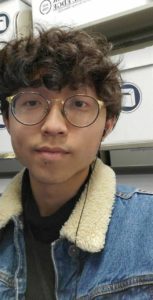 Ewen holds a BA in Linguistics and German Studies, and specializes in endangered language documentation and revitalization. His research interests are mainly centered around phonetics and phonology, and his ultimate goal is to work on under-documented Tibeto-Burman languages of the Himalayas and its surrounding regions. For the Endangered Alphabets Project, he will predominantly be handling the scripts of South Asia.
Ewen holds a BA in Linguistics and German Studies, and specializes in endangered language documentation and revitalization. His research interests are mainly centered around phonetics and phonology, and his ultimate goal is to work on under-documented Tibeto-Burman languages of the Himalayas and its surrounding regions. For the Endangered Alphabets Project, he will predominantly be handling the scripts of South Asia.
Miranda Metheny
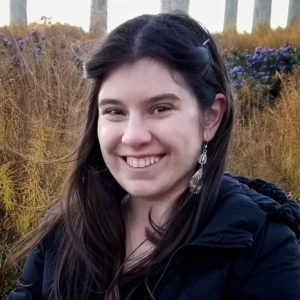 Miranda is a lifelong language learner, a true-bred Missourian, and a shameless promoter of all things Faroese. After studying and working in Journalism, she now teaches World Languages on Capitol Hill in Washington, DC. She loves to spend her summer breaks traveling abroad, meeting new people, tasting new foods and collecting memories and adventures. This year, while the world stands still, she is excited to help catalogue, celebrate and promote special scripts with the Atlas of Endangered Alphabets.
Miranda is a lifelong language learner, a true-bred Missourian, and a shameless promoter of all things Faroese. After studying and working in Journalism, she now teaches World Languages on Capitol Hill in Washington, DC. She loves to spend her summer breaks traveling abroad, meeting new people, tasting new foods and collecting memories and adventures. This year, while the world stands still, she is excited to help catalogue, celebrate and promote special scripts with the Atlas of Endangered Alphabets.
Evan Murdoch
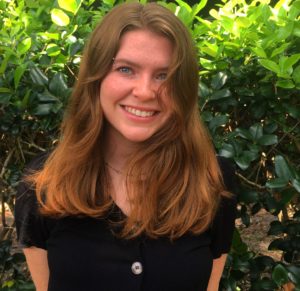 Evan is a recent graduate of New College of Florida, where she majored in Anthropology and Art History. She is interested in archival and museum collections, and especially the process by which the past is created and preserved in the present through tangible and intangible heritage. She is extremely excited to become involved in this project and looks forward to the opportunity to work with the Endangered Alphabets team to further its aim to keep languages alive and accessible.
Evan is a recent graduate of New College of Florida, where she majored in Anthropology and Art History. She is interested in archival and museum collections, and especially the process by which the past is created and preserved in the present through tangible and intangible heritage. She is extremely excited to become involved in this project and looks forward to the opportunity to work with the Endangered Alphabets team to further its aim to keep languages alive and accessible.
Ishita Panda
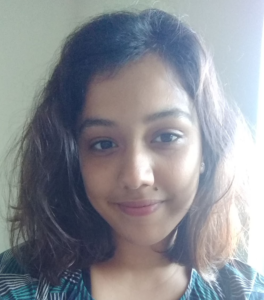 Ishita studies mathematics and linguistics, and loves to learn. She is passionate about food, language and culture, and is always looking to find out more. She loves to read and enjoys solving math problems, and will be delighted if you ask for help with math homework. When she’s not reading or doing math, you will find her (a) cooking, (b) binging Netflix or (c) curled up by the window with her dog in her lap and a cold coffee in her hand, looking at vintage fashion from around the world.
Ishita studies mathematics and linguistics, and loves to learn. She is passionate about food, language and culture, and is always looking to find out more. She loves to read and enjoys solving math problems, and will be delighted if you ask for help with math homework. When she’s not reading or doing math, you will find her (a) cooking, (b) binging Netflix or (c) curled up by the window with her dog in her lap and a cold coffee in her hand, looking at vintage fashion from around the world.
Earvin Pelagio
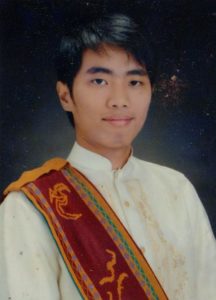 Earvin Christian Pelagio is a graduate student of Linguistics in the University of the Philippines Diliman. He is a Philippine linguist currently affiliated with Commission on the Filipino Language, the Philippines’ language agency. While his work focuses mainly on creating Latin script-based orthographies, he also wants to learn more about indigenous scripts and their importance in the empowerment and recognition of indigenous/minoritized communities of the Philippines. Besides scripts, his research interests are multilingualism, language documentation, language policies and support, and languages in the Philippines in general (both signed and spoken).
Earvin Christian Pelagio is a graduate student of Linguistics in the University of the Philippines Diliman. He is a Philippine linguist currently affiliated with Commission on the Filipino Language, the Philippines’ language agency. While his work focuses mainly on creating Latin script-based orthographies, he also wants to learn more about indigenous scripts and their importance in the empowerment and recognition of indigenous/minoritized communities of the Philippines. Besides scripts, his research interests are multilingualism, language documentation, language policies and support, and languages in the Philippines in general (both signed and spoken).
Walter T. Sano
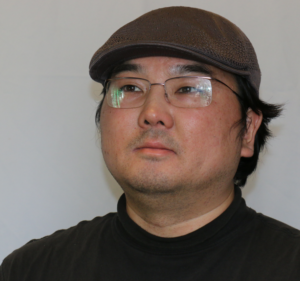 Walter is a Brazilian linguist who specialises in writing systems—both his Master’s Thesis and PhD Dissertation were devoted to developing a romanization (transcription, transliteration) system from the Arabic abjad to the Latin alphabet. His first contact with a non-Latin script was during his childhood, when he started learning Japanese and realised letters such as A, B, and C weren’t everything there was to written communication. He hasn’t stopped since and up until now has, to a greater or lesser extent, expanded his knowledge of writing systems to encompass alphabets, abjads, syllabaries and even music notation ♪
Walter is a Brazilian linguist who specialises in writing systems—both his Master’s Thesis and PhD Dissertation were devoted to developing a romanization (transcription, transliteration) system from the Arabic abjad to the Latin alphabet. His first contact with a non-Latin script was during his childhood, when he started learning Japanese and realised letters such as A, B, and C weren’t everything there was to written communication. He hasn’t stopped since and up until now has, to a greater or lesser extent, expanded his knowledge of writing systems to encompass alphabets, abjads, syllabaries and even music notation ♪
Oleś Uziembło
 Born almost fifty years ago, grew up in Poland and Soviet Union. Lecturer in Chinese and Linguistics at Warsaw University. Studied both in China and Poland. Majored in Anthropology and Sinology. Currently mostly a language teacher, yet working on writing systems and their interaction with speech from semiotic, cognitive, linguistic and visual art perspective in Sign and Symbol research group. Amateur calligrapher, stage performer, poetry lover and SF aficionado.
Born almost fifty years ago, grew up in Poland and Soviet Union. Lecturer in Chinese and Linguistics at Warsaw University. Studied both in China and Poland. Majored in Anthropology and Sinology. Currently mostly a language teacher, yet working on writing systems and their interaction with speech from semiotic, cognitive, linguistic and visual art perspective in Sign and Symbol research group. Amateur calligrapher, stage performer, poetry lover and SF aficionado.